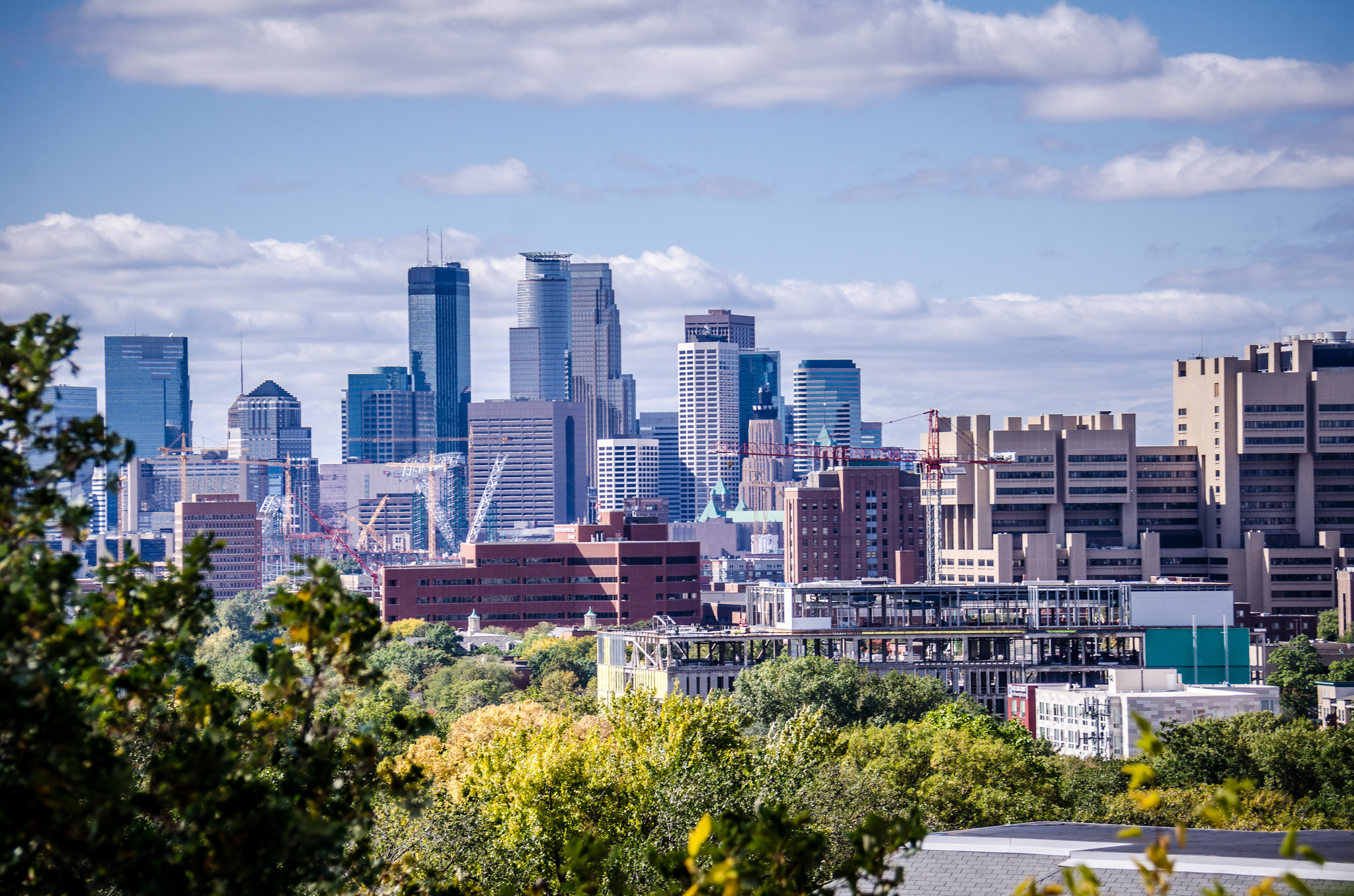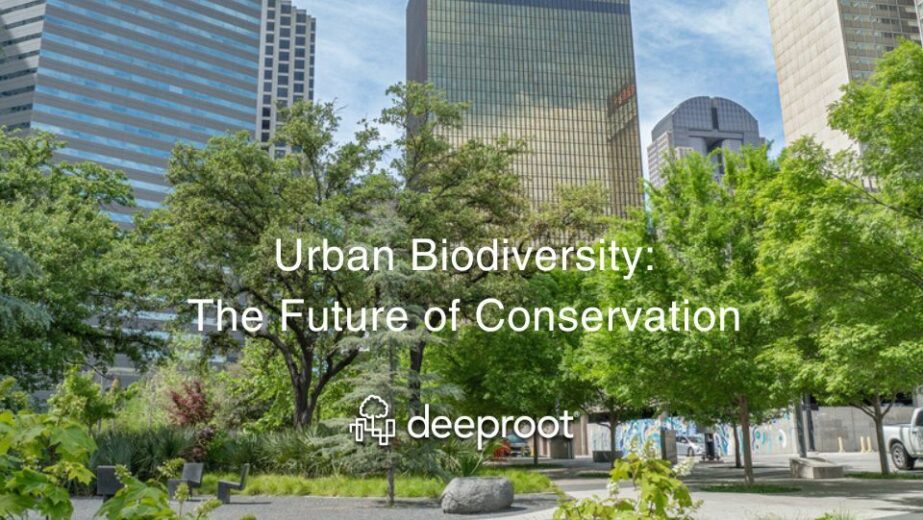Nearly eight years ago, we installed a large Silva Cell system along 48 blocks of downtown Minneapolis. Called Marquette and 2nd (MARQ2), this green stormwater infrastructure project is in an ultra-urban, mixed-use area that needed to accommodate mass transit, cars, and pedestrians. The designers (SEH and URS) specified Silva Cells for stormwater management in addition to growing street trees – in all, nearly 10,000 Silva Cells were installed, providing more than 19,000 cubic feet (0.45 acre feet / 558 cubic meters / 147,400 gallons) of stormwater treatment capacity.
We have an office in Minneapolis, so we’ve been able to track the project fairly closely over the years. The stormwater component of the system has worked beautifully and without incident since installation. We noticed, however, that after a strong start many of the 167 trees weren’t looking so great. Even some trees that had been thriving for a few years after installation were in decline. In an effort to understand what happened, we took a more detailed look at a subset of these trees to try to diagnose what was impacting them. Today, we want to share key findings of that monitoring and discuss the takeaways for anyone designing with Silva Cells.
Study description
We began our analysis by assessing the overall condition of the MARQ2 trees, assigning each tree a visual rating and dieback rating. From that broader analysis, we selected 10 Emerald Lustre Maples (Acer platanoides ‘Emerald Lustre’) trees that were visually in good condition and 10 Emerald Lustre Maples that were visually in bad condition for more detailed analysis. We chose to compare trees of the same species to facilitate a statistical analysis. For each of these trees, we analyzed the following three factors:
- Depth of root flare and girdling roots: Soil was manually removed from the base of the trees such that we could locate the root flare and ensure the tree was planted at the correct depth. Trees were also checked for girdling roots and signs of stress.
- Tree access to Silva Cell system: a 6-foot (1.8 m) long tile probe was inserted at an angle into the Silva Cell system to ensure access was available. This was done at the four cardinal directions and, in some cases, also in the corners.
- Soil moisture content: A soil moisture meter was used to measure soil moisture content at three points: north, south, and east. Measurements were taken at 6” (152mm) and 12” (305mm) at each point.
Depth of root flare and girdling roots
What was most telling in our field work was that all but one of the 20 trees we inspected were planted improperly.
These trees were planted far too deeply to allow them to thrive. Several were planted so deeply that we could not find the root flare or root system at all. This planting error has resulted in nearly all the trees becoming girdled or beginning to girdle themselves (though it should be noted that not all the trees are showing symptoms of this yet).
We also encountered several trees that appeared to have already been girdling in the nursery and should not have been selected in the first place. Some trees also displayed a high root collar on one side and a low root collar on the other, making correct planting difficult. Two other trees had been planted at an angle such that they will eventually grow into the tree grate.
Tree access to Silva Cell system
We found very few tree pits that had access to the Silva Cell system on all four sides — most were blocked on at least two sides. In addition, it appears UB-24 root barrier was used, which is much too deep considering the pavement profile. This may be creating an additional obstacle for the trees.
Soil moisture content
Currently the project is collecting runoff from about 1.1 acres, but it has the potential to store the 1” (25mm) rain fall event from a 5.7 acre watershed. Water enters the Silva Cell system through pervious pavers and tree pit openings. Project engineers and landscape architects designed the streetscape to route stormwater to the soil in the Silva Cells to eliminate an irrigation system and reduce runoff.
The Silva Cell groups have perforated piping to convey excess water out of the system. This water is first filtered through aggregate and 3’-4’ (.9 m – 1.2 m) of bioinfiltration media in the Silva Cells. Based upon data values from research done by Prince Georges County in Maryland, the filtration offered by the soil within the Silva Cells will remove over 80% of Phosphorous, 60% Total Kjeldahl Nitrogen, and over 90% of heavy metals such as Lead, Copper, Zinc and Iron.
Overall, we found that the moisture readings did not correlate to whether or not a tree was doing well. Rainfall was above average in September and October 2016, when the sampling occurred.
Additional observations
In addition to all the above, we also noticed a number of other factors that are likely contributing to the failure of these trees to thrive:
- Though it was not specified on the project details, landscape fabric was placed over the tree root balls in the tree pit and is putting unnecessary stress on the trees. Two to four inches (50mm – 100mm) of soil has accumulated on top of the fabric and it is pressing down on the tree. The fabric is also wrapped tightly around the trunks of the trees, in some cases causing the bark to grow around the fabric.
- In two tree pits we found a high percentage of gravel, and took soil samples from these areas.
- Trunk wounds, some very significant, were observed on several trees.
- Improper trimming techniques (flush cutting and head cutting vs. proper Shigo Target Pruning techniques) were also observed.
Statistical analysis did not show any significant difference between tree condition and root crown depth, though trees planted more deeply were on average in worse condition.
Conclusion
While a number of factors appear to be contributing to the decline of many of the MARQ2 trees, improper planting depth and root girdling are likely the primary reasons for their decline, as almost all the trees analyzed were planted too deeply and had girdling roots. While there was no significant difference in the severity of rooting depth and girdling roots for the trees in bad condition versus those in good condition, we believe the ones in good condition are likely to go into decline due to the same factors.
What does this really tell us?
The main takeaway is that multiple factors must be in place in order for trees to thrive – an adequate amount of soil is a precondition for long-term success, but is not sufficient to overcome other flaws. Designers, owners, and contractors investing in rooting systems like the Silva Cell must remain vigilant to selecting proper stock, providing adequate spacing for canopy expansion, ensuring openings large enough for trunk flare growth, avoiding excessive planting depths, and of course planning for ongoing care and maintenance.






Thank you for publishing this article.